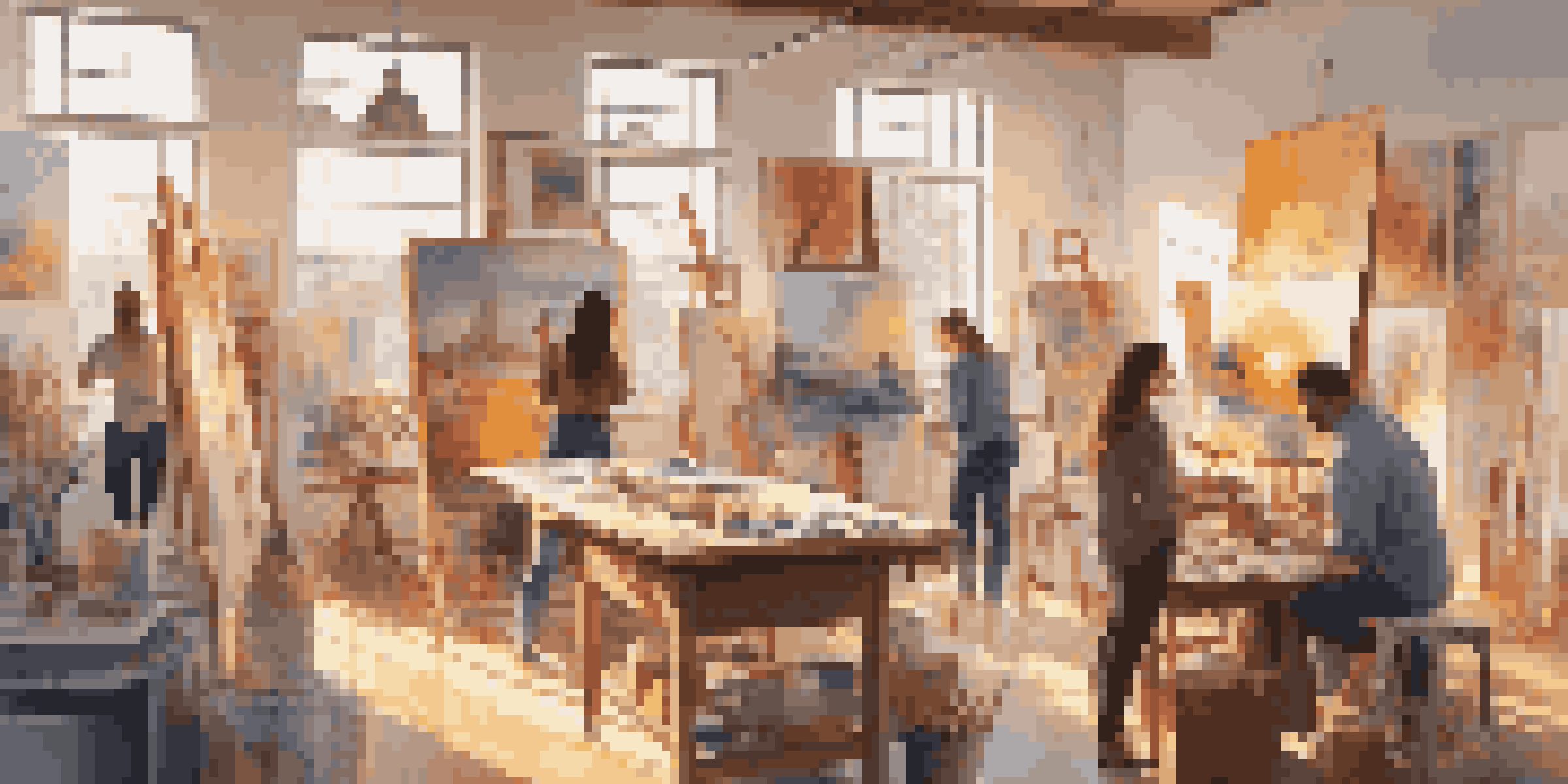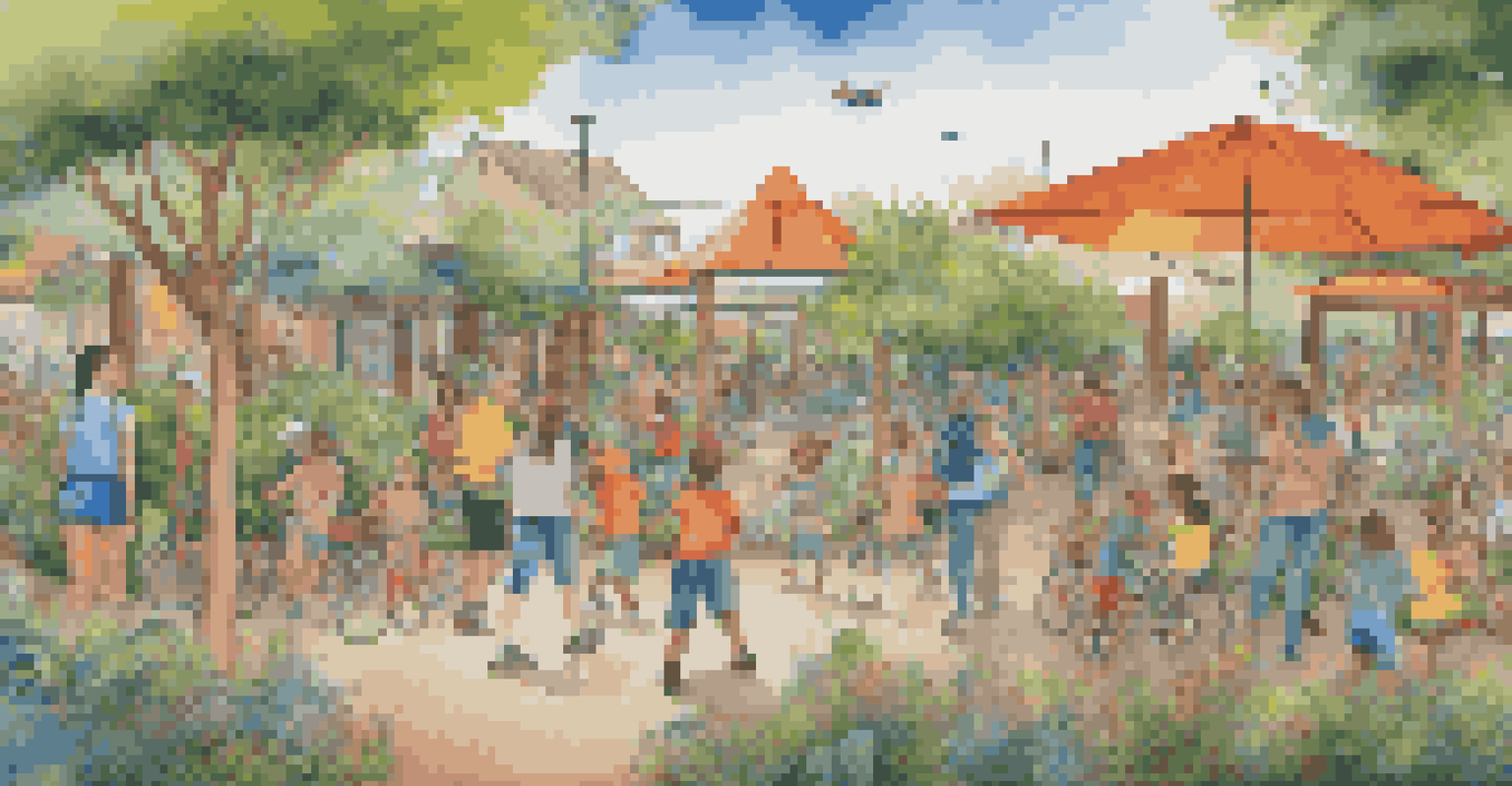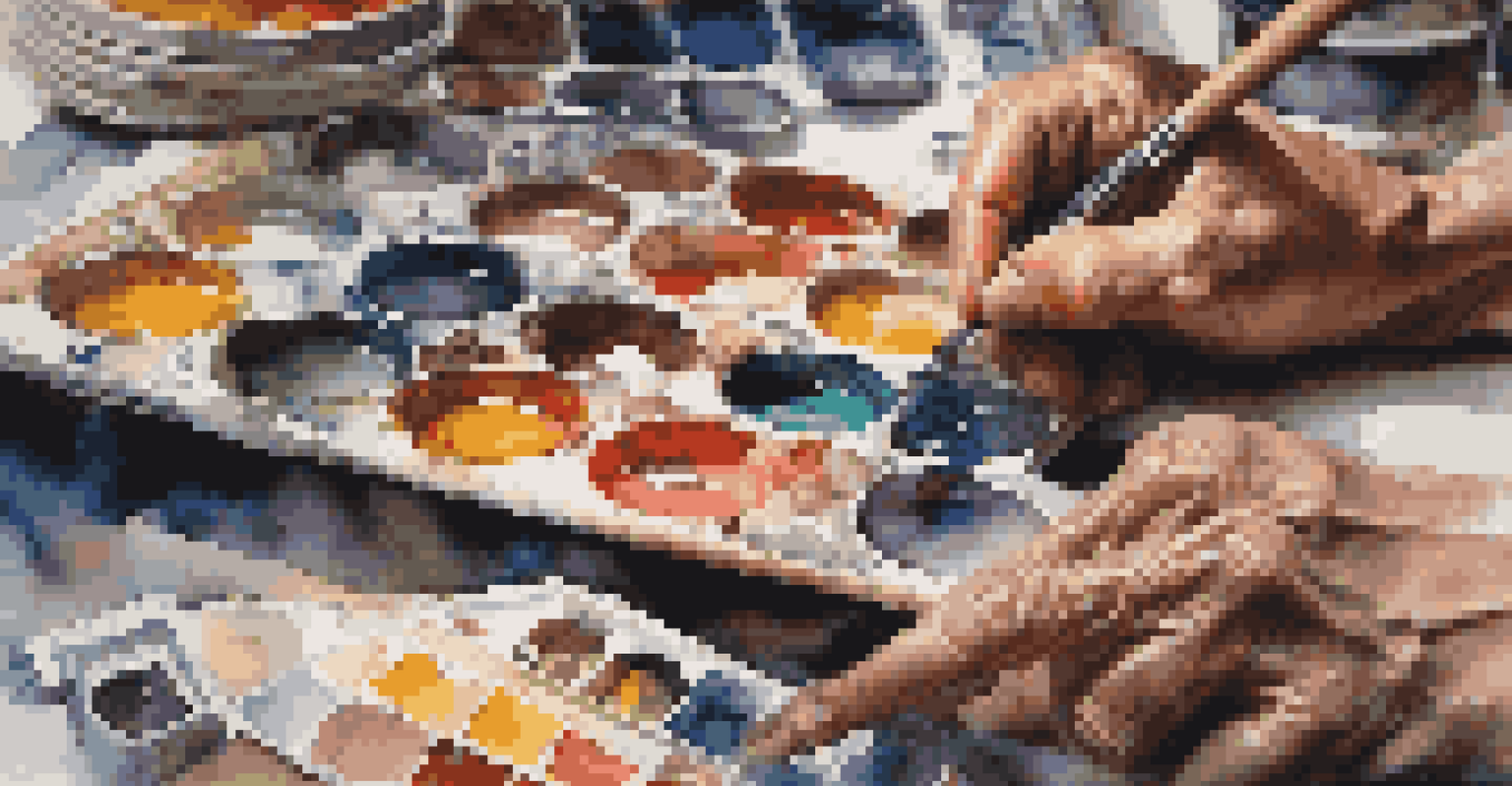The Role of Art Collectives in Driving New Innovations

Understanding Art Collectives and Their Purpose
Art collectives are groups of artists who come together to create, share, and promote their work. Unlike individual artists, these collectives thrive on collaboration, pooling resources and talents to enhance their artistic endeavors. This communal approach allows for a rich exchange of ideas, which can lead to groundbreaking innovations in various art forms.
Creativity is contagious, pass it on.
In essence, art collectives serve as incubators for creativity, providing a supportive environment where artists can experiment without the fear of judgment. Each member brings unique perspectives and skills, which can spark new concepts and methodologies. This blending of talents often results in projects that would be challenging for an individual artist to achieve alone.
Moreover, the collective nature of these groups often encourages members to step outside their comfort zones. By engaging with other artists, they can explore unfamiliar techniques or themes, broadening their creative horizons. This collaborative spirit not only nurtures innovation but also fosters a sense of community among artists.
Historical Examples of Influential Art Collectives
Throughout history, several art collectives have made significant impacts on the art world. For instance, the Bauhaus movement, founded in Germany in 1919, brought together architects, artists, and designers to create functional yet artistic works. The collective's emphasis on merging art with technology led to innovations in modern design that are still celebrated today.

Another notable example is the Guerrilla Girls, an anonymous group of female artists formed in the 1980s. They used their collective voice to challenge sexism and racism in the art world, creating powerful visual campaigns that brought attention to gender inequality. Their innovative approach to activism through art has inspired countless other movements.
These examples illustrate how art collectives can transcend traditional boundaries, influencing not only the art they produce but also the societal conversations surrounding it. By working together, these groups can amplify their message and reach a wider audience, demonstrating the profound impact of collaborative creativity.
The Role of Collaboration in Artistic Innovation
Collaboration is at the heart of what makes art collectives so innovative. When artists from different backgrounds come together, they can combine their diverse skills and viewpoints, leading to unique artistic expressions. This synergy can generate ideas that might not have emerged in isolation.
Alone we can do so little; together we can do so much.
For example, a painter might collaborate with a digital artist, blending traditional and modern techniques to create a new art form. This not only pushes the boundaries of creativity but also invites audiences to experience art in fresh and unexpected ways. The result is often a richer narrative that resonates with a broader audience.
Moreover, the collaborative process can help artists overcome creative blocks. By sharing ideas and challenges with fellow collective members, artists can gain new insights and encouragement, reinvigorating their passion for creation. This dynamic interplay fosters an environment ripe for innovation.
Art Collectives as Platforms for Emerging Artists
Art collectives provide invaluable platforms for emerging artists to showcase their work. Often, these collectives focus on promoting underrepresented voices, giving them the visibility they might not achieve on their own. This nurturing environment helps to level the playing field in the competitive art world.
By participating in a collective, emerging artists can benefit from shared resources, mentorship, and networking opportunities. They can learn from more experienced members, gaining insights into both the creative process and the business side of art. This support system can be crucial for their growth and success.
Additionally, art collectives often organize exhibitions, workshops, and community events, allowing new artists to connect with audiences and collectors. This exposure can lead to career-defining opportunities, showcasing the collective's role in fostering the next generation of artistic talent.
Innovating Through Community Engagement and Outreach
Many art collectives actively engage with their communities, using art as a tool for social change. By collaborating with local organizations, they can address pressing issues and inspire collective action. This community-centered approach often results in innovative projects that reflect the needs and aspirations of the people they serve.
For instance, some collectives create public art installations that engage local residents in the creative process. These projects not only beautify neighborhoods but also foster a sense of ownership and pride among community members. This engagement can spark further innovations, as artists and residents collaborate to envision and realize shared goals.
Moreover, by prioritizing accessibility in their work, art collectives can reach a broader audience. This inclusivity not only enriches the artistic landscape but also encourages diverse perspectives, ultimately driving innovation as artists respond to the varied experiences and backgrounds of their community.
Challenges Faced by Art Collectives in Innovation
While art collectives are hubs of creativity, they also face challenges that can hinder innovation. One significant hurdle is balancing individual artistic visions with the collective's goals. Members may have differing opinions on the direction of a project, which can lead to conflict or stagnation if not managed effectively.
Additionally, funding can be a major obstacle for many collectives. Securing financial support for collaborative projects often requires extensive grant writing and networking, which can distract from the creative process. Without adequate resources, even the most innovative ideas can struggle to come to fruition.
Lastly, the fast-paced nature of the art world means that collectives must constantly adapt to new trends and technologies. Staying relevant while maintaining their unique identity can be a delicate balancing act. However, overcoming these challenges can ultimately lead to stronger, more innovative collectives.
The Future of Art Collectives in Driving Innovation
As we look to the future, art collectives are poised to play an even more significant role in driving innovation. The rise of digital technology has opened up new avenues for collaboration, allowing artists from around the globe to connect and create together. This interconnectedness can lead to exciting cross-cultural exchanges and fresh ideas.
Moreover, the increasing emphasis on social and environmental issues in art aligns with the collective model. By working together, artists can amplify their messages and create impactful works that resonate with contemporary audiences. This collaborative spirit is essential for addressing complex challenges through creative solutions.

Ultimately, the evolution of art collectives may redefine how we think about art-making. By fostering collaboration, inclusivity, and innovation, these groups can continue to inspire and influence not only the art world but society as a whole, cementing their place as vital catalysts for change.